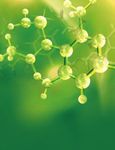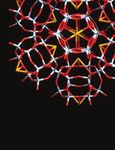Simultaneous HPLC Determination of Methocarbamol, Paracetamol and Diclofenac Sodium
←
→
Page content transcription
If your browser does not render page correctly, please read the page content below
ISSN: 0973-4945; CODEN ECJHAO
E-Journal of Chemistry
http://www.e-journals.net 2011, 8(4), 1620-1625
Simultaneous HPLC Determination of
Methocarbamol, Paracetamol and Diclofenac Sodium
DESHMUKH HAFSA, S. CHANDA and PRADNYA J. PRABHU*
Department of Chemistry
K. J. Somaiya College of Science and Commerce
Vidyavihar (E), Mumbai-400077, India
pjprabhu@rediffmail.com
Received 18 December 2010; Accepted 28 February 2011
Abstract: A rapid and simple high performance liquid chromatography method
was developed and validated at λ=275 nm for simultaneous determination of
methocarbamol, paracetamol and diclofenac sodium (lamotrigine as an internal
standard) from pharmaceutical preparation. The separation was performed using
methanol: water: GAA, in the ratio of 400:600:05 (v/v) as the mobile phase.
The detector response was linear in the range of 5 to 45 µg, 3.25 to 29.25 µg,
0.5 to 4.5 µg for methocarbamol, paracetamol and diclofenac sodium
respectively. The percentage assay of methocarbamol, paracetamol and
diclofenac sodium was found between 100, 99.76 and 99.31% respectively. The
described method has the advantage of being rapid and easy hence it can be
applied for routine quality control analysis.
Keywords: Methocarbamol, Paracetamol, Diclofenac sodium, RP-HPLC, Pharmaceutical formulation
Introduction
Methocarbamol 1,2 has the molecular formula C 11 H15 NO5 and molecular weight
241.241 g/mol. Its chemical name is [2-hydroxy-3-(2-methoxyphenoxy)-propyl]
aminoformate. Paracetamol2-4 has the molecular formula C8H9NO2 and a molecular weight
151.17 g/mol. Chemical name of paracetamol is N-[4-hydroxyphenyl]ethanamide.
Diclofenac sodium2,4,5 has molecular formula C14H11Cl2NO2 and molecular weight
318.14g/mol. Its chemical name is 2-[-2-(2, 6-dichlorophenyl) amino phenyl] ethanoic acid.
Methocarbamol 500 mg, paracetamol 325 mg and diclofenac sodium 50 mg in combination
are available in market by brand name Robinaxol-D which is a muscle relaxant2. It causes
skeletal muscle relaxation by preferential block of polysynaptic spinal refluxes2.
A literature survey reveals that there is no method reported so far for the simultaneous
determination of these drugs in combined dosage form or any such pharmaceutical preparation1621 P. J. PRABHU et al.
by RP-HPLC using UV/Visible detector even though the validation of individual drug and in
combination with other drugs are reported6-9. In this communication we report a new method
for simultaneous determination of methocarbamol, paracetamol and diclofenac sodium in
combination tablet.
ONa
Methocarbamol Paracetamol Diclofenac sodium
Figure 1. Structure of methocarbamol, paracetamol and diclofenac sodium
Experimental
The methocarbamol, paracetamol and diclofenac sodium and lamotrigine working standards
were obtained as a gift sample from Watson Pharmaceutical Ltd. Cipla Ltd and Khandelwal
Ltd, India with purity of 98.99, 99.89 and 99.99% respectively. The formulation of the tablet
with combination of methocarbamol 500 mg, paracetamol 325 mg and diclofenac sodium
50 mg is available in market by brand name Robinaxol-D. All the reagents used were of
chromatographic grade. All dilutions were performed in standard volumetric flask. Triple
distilled water was prepared in the laboratory.
Instrumentation and chromatographic conditions
Chromatography was performed on Agelint high performance liquid chromatograph equipped
with PU-1580 liquid chromatographic pump with 20 µL loop and Agelint UV/Visible-1575
intelligent variable wavelength detector. The stationary phase is HiQ Sil C18Hs column (4.6 mm
ID × 250 mm L), using (400: 600: 05) methanol: water: GAA as mobile phase. The
chromatographic conditions had previously been optimized to achieve the best resolution and
peak shape. Detection was performed at λ=275 nm having flow rate of 1 mL/min. The typical
chromatogram is shown in Figure 2.
Stock solution of methocarbamol (Solution 1)
50 mg of methocarbamol was accurately weighed, transferred into 1000 cm3 of volumetric
flask and dissolved in the minimum amount of mobile phase and diluted up to the mark with
mobile phase.
Stock solution of paracetamol (Solution 2)
32.5 mg of Paracetamol was accurately weighed and transferred into 100 cm3 of volumetric
flask. It was dissolved in the minimum amount of mobile phase and then diluted up to the
mark with mobile phase.
Stock solution of diclofenac sodium (Solution 3)
5 mg of Diclofenac sodium was accurately weighed, transferred into 100 cm3 of volumetric
flask and dissolved in the minimum amount of mobile phase and then diluted up to the mark
with mobile phase.
Stock solution of lamotrigine (Solution 4)
10 mg of Lamotrigine was accurately weighed, transferred into 100 cm3 of volumetric flask
and was dissolved in the minimum amount of mobile phase and then diluted up to the markSimultaneous HPLC Determination of Methocarbamol 1622
with mobile phase .From this solution 1 cm3 of solution was used for each standard solution
as an internal standard.
mAU
Minutes
Figure 2. Chromatogram showing separation by RP-HPLC
(1) Diclofenac sodium, (2) Paracetamol, (3) Lamotrigine and (4) Methocarbamol
Preparation of working standard solution
A varying amount of stock solutions of methocarbamol, paracetamol and diclofenac sodium
were added to a series of 50 cm3 volumetric flasks. To each flask 1 cm3 of internal standard
(Solution 4) was added. These mixtures were then diluted up to the mark with mobile phase
which gave concentration range between 5 to 45 µg/cm3 of methocarbamol, 3.25 to 29.25 µg/cm3
of paracetamol and 0.5 to 4.50 µg/cm3 of diclofenac sodium.
Preparation of sample solution (Solution 5)
Twenty tablets were weighed accurately and average weight of one tablet was calculated.
The tablets were crushed to furnish a homogeneous powder and a quantity equivalent to one
tablet (1214 mg) was weighed and dissolved in a minimum quantity of methanol. This was
transferred to the 1000 cm3 of standard volumetric flask with filtration by using a Whatman
filter paper 41. The filter paper was washed with methanol and the washings were collected
in to the standard volumetric flask. The contents of the flask were then diluted up to the
mark with methanol and used as a sample solution.
Validation procedure
Linearity
Different concentrations of methocarbamol (5 to 45 µg), paracetamol (3.25 to 29.25 µg) and
diclofenac sodium (0.5 to 4.5 µg) were prepared from stock solution of respective API in
mobile phase. 20 µL of each solution was injected and the detector response for the different
concentration was measured. The drug peak area was calculated for each concentration level
and a graph was plotted of drug concentration against the peak area. The plot was linear in
the range mentioned above. This experiment was performed thrice and the mean peak area
response was used for calculations. The data was analyzed by linear regression least square
fitting. The statistical data obtained is given in Table 1.1623 P. J. PRABHU et al.
Table 1. Linear regression data
Regression Output Methocarbamol Paracetamol Diclofenac sodium
Constant –0.07128 –0.03356 0.13624
Standard error of Y estimate 1929.7277 1292.9234 1.86684
R squared 1 1 0.999
No. of observations 9 9 9
Degree of freedom 7 7 7
X Coefficient(S) (m) 1.69585 2.7274 0.18114
Standard error of coefficient 0 0 3.33 x 10 -4
System suitability
The coefficient of variation for peak area and retention time value for all the drugs was less
than 2.00% for three replicate measurements of the same sample.
Robustness of the method
In the present work effect of flow rate was studied for the robustness of the method. The
analysis was performed by using flow rate of ±0.2 cm3/minute. The results are summarized in
Table 2, 3 and 4 which shows that method is not affected by deliberate change in the flow rate.
Table 2. Effect of flow rate - methocarbamol
Flow rate, cm3/min Retention time, min. Theoretical plate Resolution
1.00 9.05 8190.26 10.9333
0.8 9.28 8618.03 10.96
1.2 8.79 7732.27 10.71
Table 3. Effect of flow rate - paracetamol
3
Flow rate, cm /min Retention time, min. Theoretical plate Resolution
1.00 4.17 1111.12 4.5809
0.8 4.41 1244.68 4.4833
1.2 3.97 1007.01 4.6095
Table 4. Effect of flow rate - (diclofenac sodium)
3
Flow rate, cm /min Retention time, min. Theoretical plate Resolution
1.00 3.02 3656.28 13.7
0.8 3.24 4199.04 13.7
1.2 2.83 3196.05 13.76
Peak asymmetry and peak tailing
The result shows that within the concentration ranges mentioned above there was an
excellent correlation between peak area ratio and concentration of the each drug. The results
are given in Table 5.
Table 5. Asymmetry factor and peak tailing factor
Components Asymmetry factor Peak tailing factor
Methocarbamol 1 1
Paracetamol 0.5 0.75
Diclofenac Sodium 1 1
Lamotrigine 1 1Simultaneous HPLC Determination of Methocarbamol 1624
Assay (from pharmaceutical preparation)
20 µL of working standard solution of methocarbamol, paracetamol and diclofenac sodium
and sample solution were injected and chromatograms were developed and evaluated. The
procedure was repeated three times, individually weighing the tablet powder (average
weight of one tablet) each time. The responses from the standard and sample were used to
calculate the amounts of the drug in the tablet. Results obtained are shown in Table 6.
Table 6. Results of HPLC assay studies (n=3)
Weight of
Amount C.O.V
sample SD C.O.V% %Assay SD
found, mg %
taken, mg
Methocarbamol 1213 500.53 0.2078 0.0415 100.1 0.0406 0.0405
Paracetamol 1212 323.42 1.5242 0.4712 99.51 0.5411 0.5437
Diclofenac Na 1211 49.75 0.4436 0.9816 99.51 0.5100 0.5125
Recovery
The accuracy of the experiment was established by using a fixed amount of pre-analyzed
sample i.e.2.5 cm3 of solution 5 was taken in an 50 cm3 of standard volumetric flask to
this 1 cm3 internal standard lamotrigine (solution 4) was added and the contents of the flask
were diluted up to the mark with mobile phase. This served as the zero level i.e. 100%. The
results of recovery analysis are given in Table 7. The mean recovery is within acceptable
limits which indicate that the method is accurate.
Table 7. Results for recovery analysis (n=3)
Labeled Amount of Amount
Percentage
S.No Formulation amount standard added found
recovery
(mg/tablet) mg/Tab (mg/tablet)
1 Methocarbamol 500 1.25 1.25 100
2 Paracetamol 325 0.814 0.814 100
3 Diclofenac Na 50 0.122 0.122 100
Each reading is the mean of the three readings
Determination of reliability of the assay method
Statistical parameters namely standard deviation (S.D) and percentage coefficient of
variation (C.O.V. %) were calculated to study the reliability of the method. Low values of
these statistical parameters for recovery indicates high reliability of the method, these values
are given in Table 8.
Table 8. Statistical parameters
Level Amount found mg/tablet Standard deviation C.O.V.%
Methocarbamol 0.0 1.25 0.00 0.00
Paracetamol 0.0 0.814 0.0003 0.0368
Diclofenac Na 0.0 0.122 0.00 0.00
Results and Discussion
Use of methanol: water: GAA in volume ratio of 400: 600: 05 resulted in good separation of
the drugs with no interfering peak at the retention time of the methocarbamol, paracetamol
and diclofenac sodium and lamotrigine viz. 9.00 minute, 4.15 minute, 3.00 minute and
5.75 minute respectively as shown in Figure 2.
Figure 2 shows typical chromatogram obtained from methocarbamol, paracetamol and
diclofenac sodium. Regression analysis for the calibration data for all the drugs showed that1625 P. J. PRABHU et al.
the dependent variable (peak area) and independent variable (concentration) were
represented by the equation y=1.69585x + 0.07128 for methocarbamol, y=0.36401x –
38.37153 for paracetamol, y=0.18114x + 0.13624 for diclofenac sodium.
The correlation coefficient obtained was 1.00, 1.00 and 0.999 for methocarbamol,
paracetamol and diclofenac sodium respectively. It shows the good linear relationship
between the concentration range 5 to 45 µg, 3.25 to 29.25 µg and 0.5 to 4.5 µg for
methocarbamol, paracetamol and diclofenac sodium respectively.
The coefficient of variation for peak area and retention time value for all the drugs was less than
2% for three replicate measurements of the same sample. This showed that the method and the
system are suitable for determination of methocarbamol, paracetamol and diclofenac sodium.
The assay of methocarbamol, paracetamol and diclofenac sodium was found to be
100.10, 99.51 and 99.51% respectively. The recovery of methocarbamol, paracetamol, and
diclofenac sodium was found to be 100, 100 and 100% respectively from recovery studies
which indicates high accuracy of the method.
Conclusion
As the proposed method is highly accurate, selective and precise hence can be used for a
routine quality control analysis and quantitative simultaneous determination of
methocarbamol, paracetamol and diclofenac sodium in pharmaceutical preparations. The
method is also fast and requires approximately 10 minute for analysis.
References
1. United State Pharmacopoeia 2005, 28th Edn.
2. Indian Drug Review September-October 2005.
3. British Pharmacopoeia 2007, Vol I.
4. Indian Pharmacopoeia 1996, Vol II.
5. United State Pharmacopoeia, 1995 Published by USP Conventions Inc., U.S.A.
6. Chawla J L, Sodhi R A and Sane R T, Indian Drug, 1996, 33(4), 280-285
7. Nikolin B, Imamovic B, Medanhodzic-Vuk S and Sober M, J Basic Med Sci., 2004,
4(2), 5-9.
8. Metherall R and Ford D, Ther Drug Monit., 1988, 10, 101.
9. Plavsic F and Culig J, Human Toxicol., 1985, 4(3), 317-332.
10. United States Pharmacopoeia (USP 24), Asian Edition, Published by United States
Pharmacopeial Convention, Inc., USA, 2000
11. Stenhoff H, Lagerstrom P O and Andersen C, J Chromatogr B Biomed Appl., 1999,
731(2), 411-417.Photoenergy
International Journal of
International Journal of Organic Chemistry International Journal of Advances in
Medicinal Chemistry
Hindawi Publishing Corporation
International
Hindawi Publishing Corporation Hindawi Publishing Corporation
Analytical Chemistry
Hindawi Publishing Corporation
Physical Chemistry
Hindawi Publishing Corporation
http://www.hindawi.com Volume 2014 http://www.hindawi.com Volume 2014 http://www.hindawi.com Volume 2014 http://www.hindawi.com Volume 2014 http://www.hindawi.com Volume 2014
International Journal of
Carbohydrate Journal of
Chemistry
Hindawi Publishing Corporation
Quantum Chemistry
Hindawi Publishing Corporation
http://www.hindawi.com Volume 2014 http://www.hindawi.com Volume 2014
Submit your manuscripts at
http://www.hindawi.com
Journal of
The Scientific Analytical Methods
World Journal
Hindawi Publishing Corporation
in Chemistry
Hindawi Publishing Corporation
http://www.hindawi.com Volume 2014 http://www.hindawi.com Volume 2014
Journal of International Journal of International Journal of Journal of Bioinorganic Chemistry
Spectroscopy
Hindawi Publishing Corporation
Inorganic Chemistry
Hindawi Publishing Corporation
Electrochemistry
Hindawi Publishing Corporation
Applied Chemistry
Hindawi Publishing Corporation
and Applications
Hindawi Publishing Corporation
http://www.hindawi.com Volume 2014 http://www.hindawi.com Volume 2014 http://www.hindawi.com Volume 2014 http://www.hindawi.com Volume 2014 http://www.hindawi.com Volume 2014
Journal of Journal of Chromatography Journal of International Journal of
Theoretical Chemistry
Hindawi Publishing Corporation
Catalysts
Hindawi Publishing Corporation
Research International
Hindawi Publishing Corporation
Chemistry
Hindawi Publishing Corporation
Spectroscopy
Hindawi Publishing Corporation
http://www.hindawi.com Volume 2014 http://www.hindawi.com Volume 2014 http://www.hindawi.com Volume 2014 http://www.hindawi.com Volume 2014 http://www.hindawi.com Volume 2014You can also read



























































